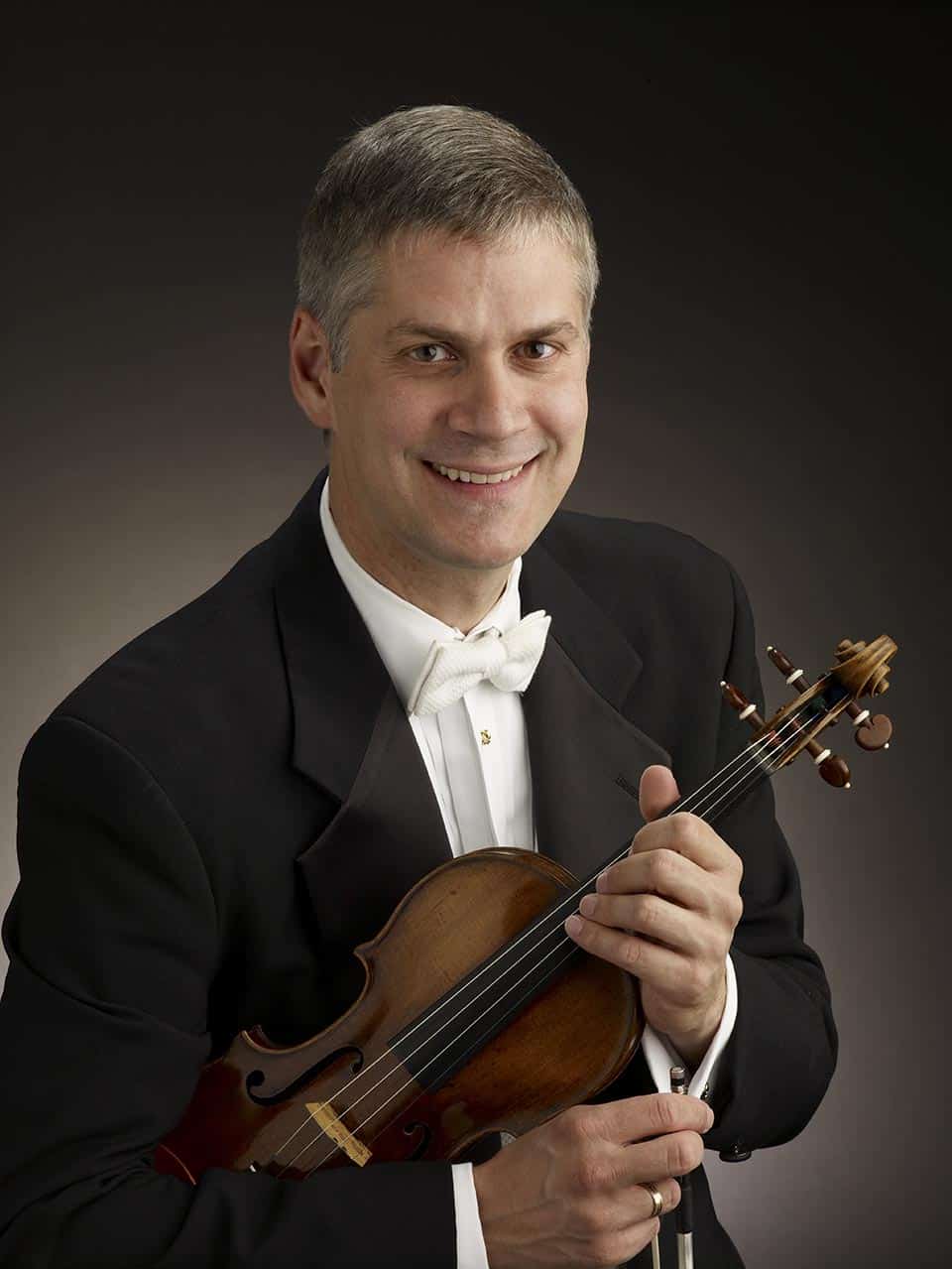Bad times: Toronto cuts orchestra and opera grants over lack of diversity
mainLudwig Van Toronto reports that the city has penalised Canadian Opera Company and the Toronto Symphony Orchestra for a perceived lack of minorities.
Toronto City Council has clawed back some of the funding promised to the Canadian Opera Company (COC) and Toronto Symphony Orchestra (TSO) for the 2018-19 season.
COC will lose $100,000 of its $1.6 million grant and TSO $50,000 of its $1.27 million.
‘We’re looking for evidence that they’re trying to reflect the city’s demographics,’ said one city boss.
Parlous times. More here.






The issue is not one of race or ethnicity or what have you but one of decreasing interest in classical music and opera among many a population. The doors to these institutions are always open to anyone interested in attending their performances. Are their respective managements expected to round up and force minorities to attend at gunpoint or something like that?
They’re open to people who feel at home there. Many people do not feel at home there and, even more importantly, they do not see the relevance of these institutions to them. Toronto is often claimed to be the most diverse city in the world. Given that, there is no reason why arts organisations with a Western European focus should continue to suck up such huge sums of public funding ahead of arts with their roots in other parts of the world. If they wish to retain it then need to demonstrate that their organisations reflect the community they are part of.
“they do not see the relevance of these institutions to them.”
Relevance? You mean they’re simply not interested.
At least be honest about it.
Giving arts organizations an incentive to diversify and thus reach a larger demographic helps insures their future. In that sense, it is an act of cultural preservation.
No, William, to pretend to be something that they are not, all in the pursuit of the filthy public fisc, is a death spiral.
The fine arts can diversify without becoming inauthentic. As Sistema illustrates, education has always been the foundation of their appreciation. With good educational systems the fine arts can successfully cross cultural and class borders. Venezuela is living proof.
So…if ethnic minorities don’t like opera, they should be “educated” until they do. That will teach them.
Disgusting. I don’t want to live in a world like this anymore.
Stupidity wins
I do not know if you are the real (pianist) Bronfman but, even if not, I fully agree with your succinct response.
TSO grant of $1.27M was decreased by $50,000 not $500,000. Not quite as scary. The gov’t funders are looking at diversity on arts boards, diversity on stage and diversity in the audience. So, no, not disgusting at all. Relevant, vital and purposeful in 2018 Toronto.
Okay. Let’s demand that all professional sports teams “look like” the respective cities they play in. Regardless of outcome, of course. That makes as much sense.
+1
Sports teams are not generally funded by taxpayers.
Major league teams are often subsidized by tax breaks from municipal or state / provincial authorities, and receive other kinds of local incentives, such as when building new facilities, for example.
+1
One of the results of the influence of identity politics, see Mr Cheng’s book in an earlier post.
“Identity politics,” of course, being a term used only by those in the comfortable majority. Stuffy Dutch professors and the such.
What term would you then suggest?
Equality Politics.
But is equality in all domains necessarily a good thing?
In some areas, some exclusion and privilege are necessary: for example, an orchestra hiring always the better most fitting player.
Ideas such as “talent” or “genius” are by nature non-egalitarian: some people have them, others don’t.
It ain’t about “equality politics.” It is about uniformitarianism, imposed from the top – that all shall be MADE equal in outcomes, as in Kurt Vonnegut’s story “Harrison Bergeron.”
Stupid.
Maybe an alternative is to award the money to support diversity efforts, at least in terms of reaching out to different audiences. Not that $50-100k will go all that far.
Good for the city. Perhaps hitting orchestras’ and opera companies’ budgets will be the only thing that forces them to recognize the need to connect with an increasingly diverse world.
How about the increasingly diverse world connecting with the institutions? Nobody is stopping them.
Absolutely right — if these operations do outreach into public schools, for instance, then the whole panoply of cultures in Toronto is being reached at the same time. It is constantly noted the range of first languages spoken in Toronto classrooms is huge.
Toronto’s “diversity” is widespread and very real. It also includes huge tranches of white people. It is often said that Toronto has the largest Italian community outside Italy, the largest Maltese outside Malta, and is has a huge Polish community and large representations from other Eastern European countries. There is a big Portuguese presence. There is a good chance many of these communities are well represented at the TSO and the COC.
But apparently some foreigners are not diverse enough. Toronto also has a huge Chinese community, and large Vietnamese and sub-continental populations.I am not so sure about Africa and the Middle East but from walking around the city I would reckon the former at least is well represented.
So this is a racial matter, and everyone who says, as Caravaggio just did, that nobody is stopping them from attending is right. Certainly, efforts should be made to make sure the opportunity to see classical productions is there but people can hardly be dragooned into the opera or symphony. (I note the National Ballet of Canada, which shares a house with the COC, has not been similarly penalised…?). Toronto is also home to a huge theatrical community, and I suspect our “diverse” communities are a mainstay of Les Mis and Wicked and Mamma Mia.
Whenever Lang Lang guests at a concert, you would think the majority of a city’s population was Chinese, to go by the audience. Other nights of the season you barely see a Chinese face. Other visiting artists draw out fellow nationals as well. When Dudamel made his Canadian debut in Ottawa with the NAC, staff were surprised by the number of Venezuelans who turned out to live in their community. Attempts to interest said Venezualenos in coming again — by trying a minimal subscription, for instance — were laughed out of court. It was a solidarity moment rather than a musical commitment.
Most Canadian arts boards require a substantial financial commitment in order for someone to be offered or granted a place, and some boards have liabilities as well. You can’t force people to take on such things.
Nor is the repertoire of the opera or the symphony hugely represented by “diverse” communities. There are few great works sourced to parts of the world where classical music had to be introduced (though many of Canada’s most successful new music composers do come from minority communities). Lots of artists — Asians in particular (with Venezuelans coming up fast on the inside, leading the Latin American stakes these days thanks in part you you-know-what). While some Africans, mostly out of South Africa, are taking their places in the opera houses of the world, Africa is not a significant source in the classical music world — perhaps too busy producing its own wonderful work. As long as Toronto City Hall and the granting arms it oversees are keeping an eye on other developments in the city’s thriving and dynamic arts scene, and supporting their endeavours, it might devote less time to trying to socially engineer relations between opera and people with other musical or artistic interests.
But it would be demented to significantly punish a segment of the musical community for things not of its making out of political correctness gone mad. Toronto is a major international city and as such has every right to present symphony and opera, with the aid of taxpayer subsidy as does every other country in the civilised western word (aside from the US). And its huge white immigrant populations should not be deprived of arts that reach them just because of the colour of their skin.
These sums, while not insignificant, are still in the range of fines rather than huge penalties, and if they are meant to serve as a wake-up call — to make the companies remember to do significant outreach and to make sure all communities are included; to make sure opportunities such as board membership and staff positions are open to members of all ethnic groups, etc.– all well and good. But if I were the COC I would bitterly resent everything that is lost due to the absence of that $100,000. And it might be those very outreach programmes, because stagehands still have to be paid.
It’s bad policy, and bad politics.
This is a positive move. The vast majority of arts organisations still see diversity as a box to check rather than as something which should be at the core of their organisations. This is especially important in a city like Toronto which is so diverse. Hopefully this warning shot will be the wake up call these organisations needs – the TSO’s recent retrenchment into safer programming is an unfortunate step in a backward direction.
‘Ludwig Van first made mention of concerns towards the diversity of Toronto’s big six arts organizations this past December, when we found that board memberships were generally white, and in some cases, mostly male.’
This issue isn’t about race or ethnicity or gender? Guess again.
Let’s see the question from another point of view. Institutions with board members predominantly male and white are being denied public funding. Public funding comes from taxes – that is from confiscation of private means by the state for “the good of all.” Since most taxes are paid by male whites it would be fair that white male’s institutions take their share of the pillage, sorry I mean taxes, first. Even better would be to abolish all public financing to everything that is not essential (things like defense, police, tribunals, infrastructure, basic science research, and a few more) and let people chose – and pay – for the king of cultural leisure they appreciate.
… – and pay WITH THE MEANS PROVIDED BY THEIR REDUCED TAXES – for the KIND of cultural leisure they appreciate.
Great idea – and you’ll end up with one huge Las Vegas.
Can hardly wait.
I’m tired of paying for ‘diversity’ and I don’t want that kind of ‘diversity’ in my cultural leisure. So it would be OK for me with ‘one huge Las Vegas’ as far as I don’t need to pay for it.
Why not fill empty seats with ‘mannequins of color’ and just pretend they’re the real thing. problem solved!
Nobody has to feel guilty, and ‘neighborhoods of color’ don’t have to bothered with why they should go downtown and pay lots of money for music that they have no relation to.
This gave me pause, from the linked article.
“In 2017, The Canada Council for the Arts implemented new diversity assessment guidelines which were no longer seen as best-practice, but a major factor in determining how much money an organization receives. The diversity criteria not only extends to staff and governance but also a commitment by arts organizations towards diversifying audiences.”
This is madness. Audiences CHOOSE. This is not in any way about improving the chance for less affluent people to attend the arts — it is about counting faces of different colour. Canada’s pricing of the high performing arts is probably as competitive as any in the world, but is still beyond some people’s means. Immigrant communities run the gamut in terms of affluence. But the massive Chinese community that is well-to-do and a lot more is not equally massively drawn to the symphony or orchestra. And because they prefer the Mirvish Theatre, with its musicals, must the COC suffer?
What next — quotas? This sort of imperative — the amount an arts organisation receives tied to a “rainbow” audience makes me want to vomit.
seems to me that this is merely a rap on the knuckles for both institutions but it might wake them up. Their future depends on attracting more people in their city.
It is a complicated issue, but isn’t it true that classical music and opera are a minority interest even amongst the traditional white European and American population. Many people of all races have no interest in the arts at all.
It is seen as a good thing to support culture and arts anyway as a form of inspiration for society at large. It is a gradual process but it is not possible to force anyone to attend OR participate if they are not interested.
Some cities fund minorities’ music and dance festivals and have some success if they facilitate easy access (such as street or open air venues). However, those initiatives would not succeed and draw in diverse audiences or participants if they were very costly to stage or ticket prices were at the level charged for opera and concert performances.
Professional opera and concerts are costly to perform but ticket prices will NOT decrease if funding is withdrawn!
The talent is there if only they’d book it. I mean, Othalie Graham is literally a Black Canadian dramatic soprano with an international reputation and a voice that won’t quit…. Could it be they are looking less diligently than they ought to? Hmmm.
“If the people don’t want to come out to the ballpark, nobody’s going to stop them.” – Yogi Berra, who had more sense than, say, a Toronto city boss.
Nobody seems to ask the most obvious question: Why do we “need” diversity? Who said we “need” diversity? Birds of a feather flock together – that’s good enough for me. Imagine if the orchestra itself were to be REQUIRED to mandate diversity among its players to reflect the local population as closely as possible…it would sound like dirt. Auditions would be rigged against the best players – a defacto affirmative action for musicians of every stripe would rule the day. A soup with fifty ingredients is bound to taste horrible.
In China there are excellent symphony orchestras (western style), made-up of Chinese players, led by fully-Chinese conductors, for entirely Chinese audiences. Program booklets are, I assume, entirely in Chinese, explaining Mozart’s symphony, Saint-Saens’ Caprice and Mahler’s ‘Lieder eines fahrenden Gesellen’ – no superfluous information. The repertoire itself is thus mostly entirely European. Should we consider such concerts as a racial phenomenon or a cultural one? and would there be a contradiction between (living) Chinese players / audiences and Kaukasian (dead) repertoire and label such concerts as ‘lacking diversity’?
The notion of ‘diversity’ in connection with classical music should be better replaced by the concept of ‘accessibility’, so that a ‘diverse’ outcome will be located at the right side: as a result of educational efforts and accessibility of the concert hall, and not through political engineering.
An easy way to have audience diversity is to have a couple of free concerts a year for public school groups. These can be repeats of previous programs and musicians can have contracts which say that they will not be paid extra for these special performances
The New York City Ballet has done this for many years having a couple of free performances of the Nutcracker Suite which also uses a lot of young i.e children ballet students from all over the Northeast US. By doing so the New York City Ballet meets the requirements of its funders for educational outreach etc.
Schools also love to have free venues for educational excursions. My school district’s school board when I was in public school had a rule that schools could not require students to attend events that would cost the student or his family money
An added benefit is that by exposing students to a type of music they have never heard before they may be increasing a more diverse audience base in the future.
All very true. It is education, education, education and easy accessibility for young people which are the only effective means to cultivate possible future audiences. This is the way forward.
The spreadsheet of Toronto’s ethnic diversity is on Wikipedia:
https://en.wikipedia.org/wiki/Demographics_of_Toronto#Ethnic_diversity
Does Toronto’s City Council reflect this diversity: https://www.toronto.ca/city-government/council/members-of-council/
If not, will they penalize themselves financially?
News story about a different level of government located in Toronto: https://www.huffingtonpost.ca/2018/06/29/premier-doug-ford-cabinet-lack-of-diversity_a_23471503/?utm_hp_ref=ca-homepage
There is also something called reversed racism….
We in Cleveland hired last year Affendi Yussuf solely for his artistic merits after an extraordinary audition in which he simply blew us away! And has shown ever since that he was the right choice.
How would a person for any job feel knowing that that person was hired because of the color of the skin or her/his gender?
+ 1
Absolutely, Franz. Put it on the agenda for when we see each other next. I see as many examples these days of positive discrimination as I do of negative.
But you have been a frequent lobbyist for more women in orchestras and very critical of those with relatively few. Can it be that the more enlightened arguments against positive discrimination/political correctness have altered your view?
“How would a person for any job feel knowing that that person was hired because of the color of the skin or her/his gender?”
Welcome to America, land of quotas and political “correctness.” Companies and organizations who hire based on merit are routinely assailed by whomever feels they were slighted. If they happen to be a member of a supposedly marginalized demographic then it’s off to find a lawyer. Being offended and being a victim are fulltime occupations nowadays. What good will social justice warriors be when when both our society and our justice system are in the crapper? How fulfilled the beneficiaries of quota systems must feel. Forced diversity is every bit as insidious and discriminatory as the most odious outward expressions of prejudice.